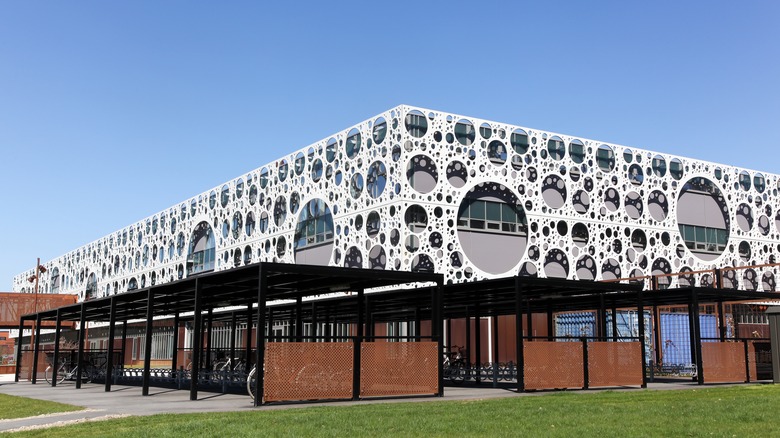Who Is Martin Wirenfeldt Nielsen, The Man Currently Overseeing A Collection Of 10,000 Brains In Denmark?
For decades, it was a quiet secret in Denmark. A collection of nearly 10,000 human brains sat in a basement, but only a precious few knew why. Known as the Brain Collection, the brains from men and women who died in Danish psychiatric hospitals between 1945 and 1982 sit in sealed plastic buckets (via CNN). Of the 9,479 brains in the collection, there were roughly 5,500 brains with dementia, 1,400 with schizophrenia, 400 with bipolar disorder, and 300 with depression, among others. According to CNN, until 2018, the brains were stored at the Risskov Psychiatric Hospital in Denmark, first by doctors Erik Stromgren and Larus Einarson and eventually by pathologist Knud Aage Lorentzen until his retirement in 1982.
For nearly 30 years, the collection was untouched, mired in a series of controversies that were financial and ethical in nature, per DR, the Danish Broadcasting Corporation. The Risskov Psychiatric Hospital no longer wished to be the custodians of the collection, and the brains were set to be destroyed, which set off an intense public discussion about its future — and a reckoning of its past because the overwhelming majority of the brains were taken without consent. After years of review by government ethical agencies and medical organizations in Denmark, the collection was deemed appropriate for medical research. In 2018, the Brain Collection had a new home at the University of Southern Denmark, along with a new custodian: Dr. Martin Wirenfeldt Nielsen.
Who is Martin Wirenfeldt Nielsen?
Martin Wirenfeldt Nielsen is a highly sought-after researcher and holds several appointments across multiple institutions in Denmark. According to Sydvestjysk Sygehus (via Google Translate), in 2022, he became a clinical associate professor in pathology at the Institute for Regional Health Research at South West Jutland Hospital in Esbjerg. In addition to the lectureship, he is a senior physician of clinical pathological anatomy at the Clinical Diagnostic Department at South West Jutland Hospital. But it is his work as the head of the Brain Collection at the University of Southern Denmark (pictured above) that has put him in the public eye.
In 2018, when Wirenfeldt Nielsen was asked if he would be interested in leading the move and overseeing the project's new home and research agenda, he had a hard time (forgive the pun) wrapping his brain around the enormity of it all. "I'd sort of heard of it in the periphery," he told CNN. "But my first real knowledge about the vast extent of it was when they decided to move it down here ... (because) how do you actually move almost 10,000 brains?" Wirenfeldt Nielsen said he and the university were equally unprepared for what was about to take place. "The whole collection was just standing there, buckets on top of each other, in the middle of the floor," he said. "And that's when I saw it for the first time ... That was like, okay, this is something I've never seen before."
Brain Education
After nearly five years into his tenure as custodian of the Brain Collection, Martin Wirenfeldt Nielsen said the brains have shown him the effects of common procedures of the era, such as the "white cut." More commonly known as a lobotomy, a tool is inserted into the frontal lobe where emotional reactions are located, so they can scrape away tracts of white matter (hence the name "white cut"). "It's a very poor treatment, because you destroy a big part of the brain," Wirenfeldt Nielsen told CNN. "And it's very risky, because you can kill the patient."
All of it, according to Wirenfeldt Nielsen, is important for the sake of education in the medical field. He says the development of the brain collection can also have an important impact on education in the medical field. "It is of course incredibly important that we train the future doctors to see the connection between what is in the syllabus and the reality they subsequently encounter with patients," Wirenfeldt Nielsen told Sydvestjysk Sygehus (per Google Translate).
When asked if he would have participated in the autopsies at the time, Wirenfeldt Nielsen's response may have surprised some, while others may have marveled at his thoughtfulness. "Actually, I would have liked to have been a part of it, because I think the thought behind the Brain Collection — I really like that," he said (via CNN). "Using your skills as a doctor to help patients in the future — I think that's quite a noble thought, actually."


